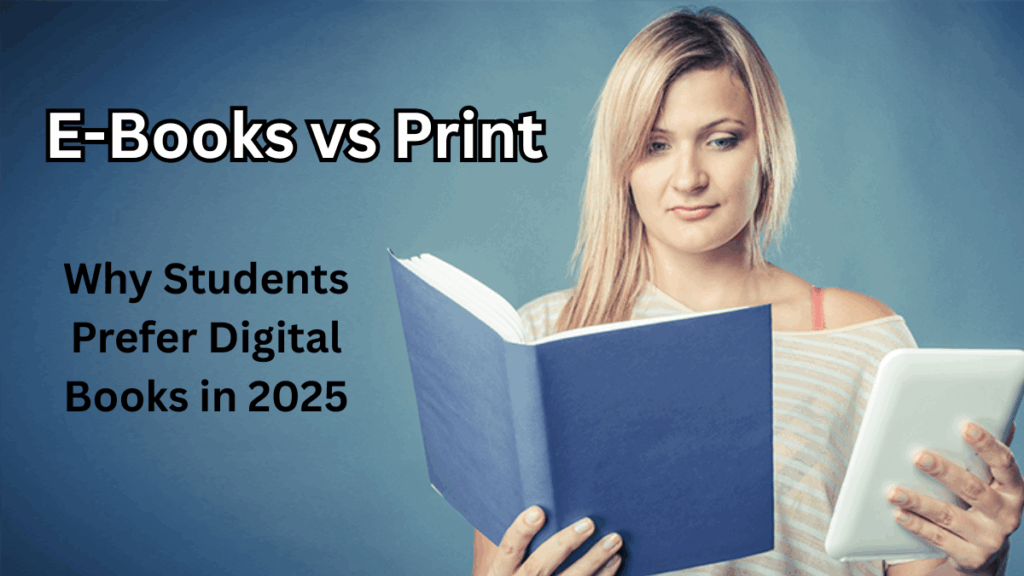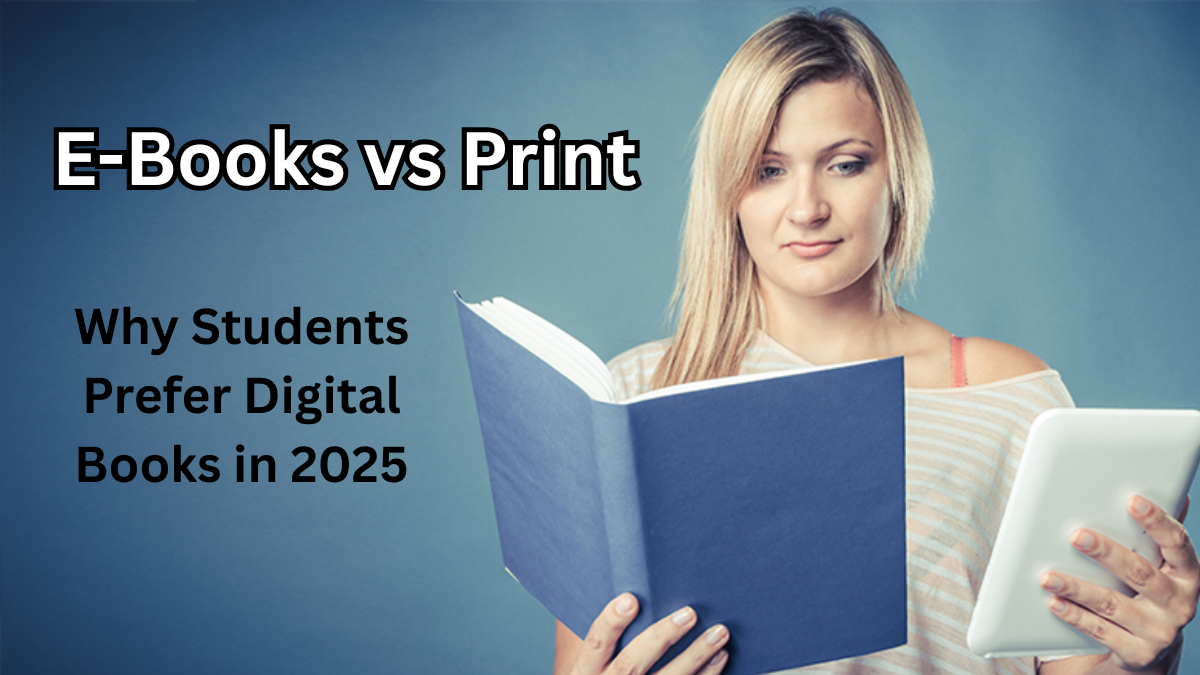The way students consume knowledge has changed drastically over the last decade. With technology becoming an integral part of education, the debate around E-Books vs Print Books has intensified. As we step into 2025, it’s clear that digital books are taking the lead, transforming how students learn, revise, and engage with content.
Let’s explore why student preference in 2025 is shifting more towards e-books than traditional printed materials.

Why Are Students Choosing E-Books Over Print?
Students today are looking for convenience, accessibility, and cost-effectiveness in their learning resources. Here’s why e-books are becoming their go-to choice:
-
Portability – Hundreds of books can be stored on a single device.
-
Cost-Effectiveness – Digital books often cost less than printed versions.
-
Instant Access – E-books can be downloaded and accessed immediately.
-
Interactive Features – Highlighting, bookmarking, and search functions make studying more efficient.
-
Eco-Friendly – Digital resources reduce paper use, aligning with sustainable learning.
E-Books vs Print Books – A Quick Comparison
Here’s a snapshot of how the two formats stack up:
| Feature | E-Books | Print Books |
|---|---|---|
| Portability | Extremely portable | Bulky and limited |
| Cost | Usually cheaper | Often expensive |
| Accessibility | Instant downloads | Need physical purchase |
| Interactivity | Highlight, search, audio | Limited |
| Eco-Impact | Paperless & green | Paper consumption |
How Digital Learning Is Redefining Education
In 2025, digital learning isn’t just a trend—it’s a necessity. With universities and schools increasingly adopting hybrid learning models, e-books are becoming a standard part of the academic toolkit. They allow:
-
Collaborative Learning – Students can share notes and annotations digitally.
-
Inclusive Access – Audio versions support visually impaired learners.
-
Faster Updates – Content is updated more frequently than in print books.
Student Preference 2025 – A Cultural Shift
The student preference in 2025 leans strongly toward digital learning materials. Surveys show that students value the flexibility of carrying a library in their pockets. For a generation that thrives on technology, e-books naturally complement their lifestyle and learning habits.
FAQs
Q1. Why are students preferring e-books in 2025?
Students prefer e-books for their portability, cost-effectiveness, instant access, and interactive features, making them more practical than traditional books.
Q2. Are e-books cheaper than print books?
Yes, in most cases, e-books are more affordable than print editions, making them a budget-friendly option for students.
Q3. Do e-books replace the need for printed books entirely?
Not entirely. While many students prefer e-books, some still use printed books for focused reading or when digital access is limited.
Q4. Are e-books better for the environment?
Yes, e-books reduce paper use and printing processes, making them a more eco-friendly alternative to print books.
Click here to learn more
